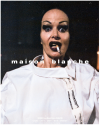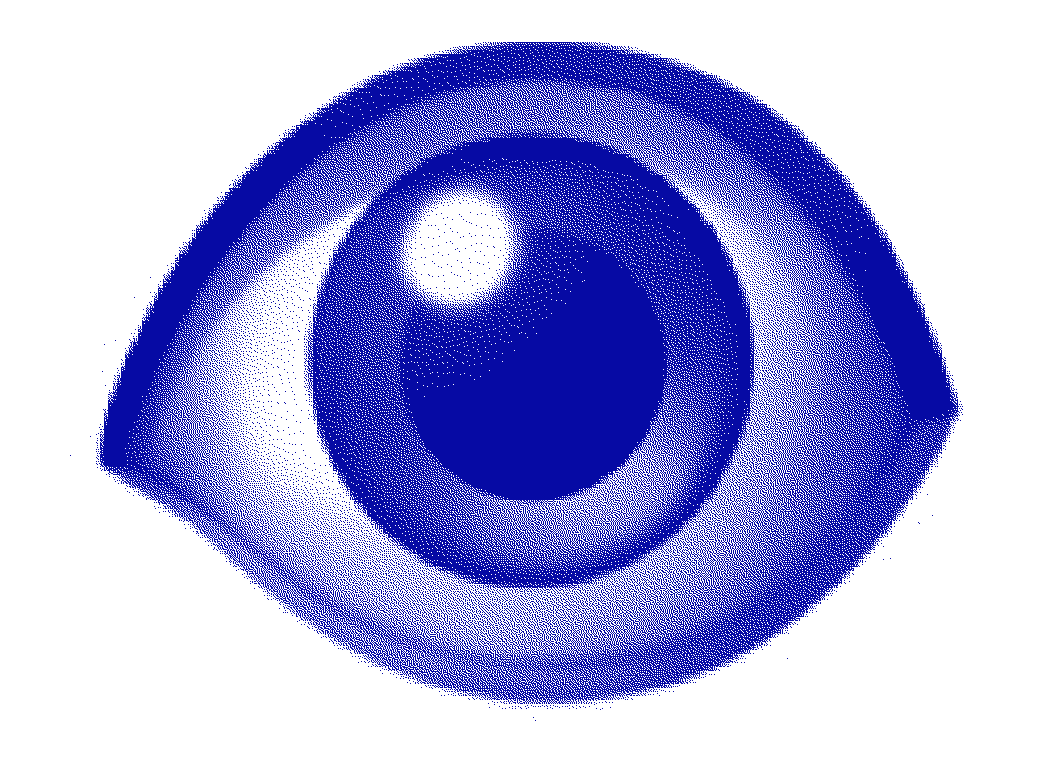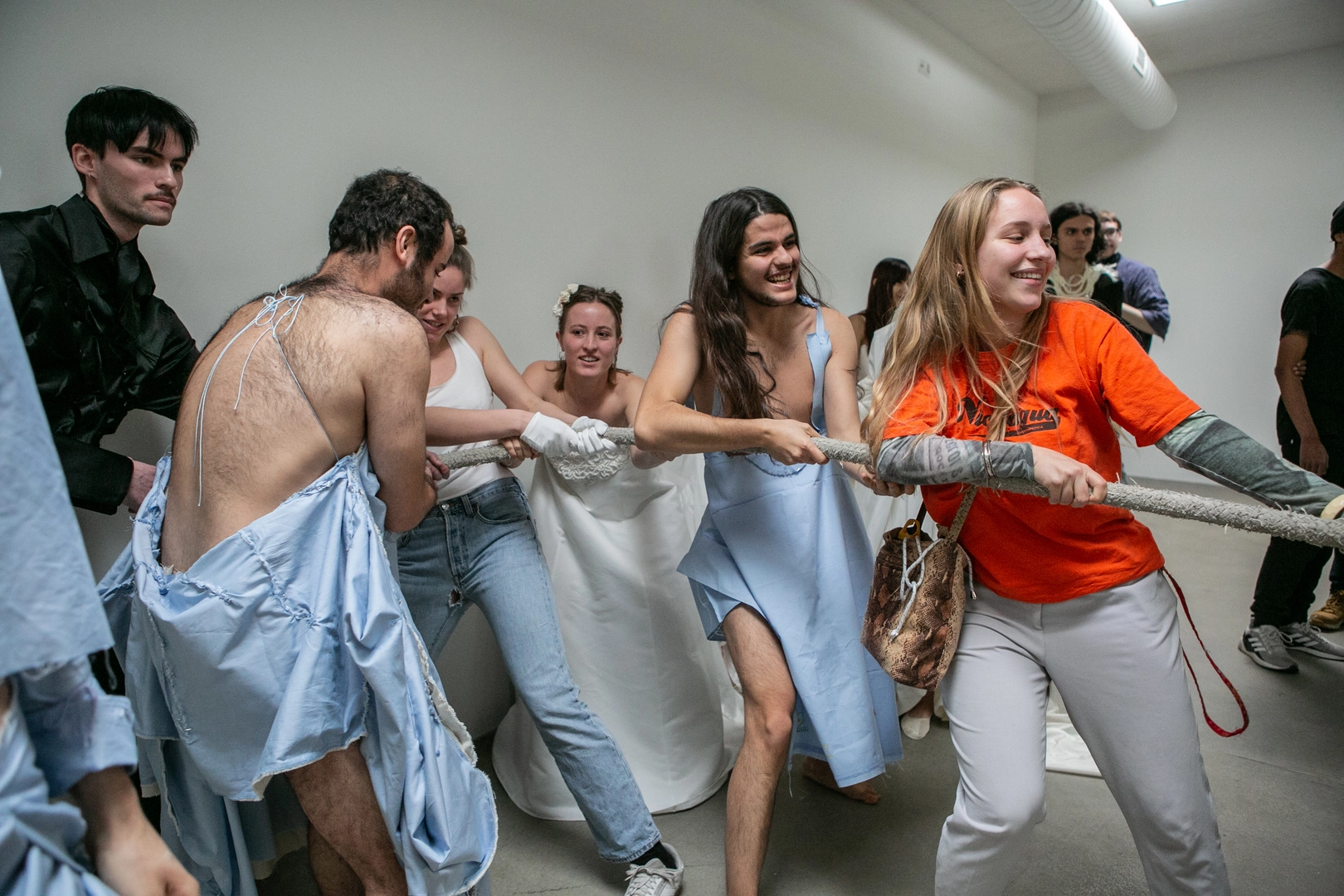CONGRATS TO OUR ALUMNI FOR BEING SELECTED FOR THE SWISS DESIGN AWARDS 2023!
Augmented Weaving
Flavia Bon, Anita Michaluszko

Physical crafts are the technologies of the pre-digital age, while digital tools are becoming the crafts of the future. Flavia Bon and Anita Michaluszko are multidisciplinary practitioners in the field of craft and design. With their project Augmented Weaving, they aim to bridge the gap between the two worlds by combining the technique of hand jacquard weaving and digital technologies into seamless workflows. • Rather than developing novel products, their goal is to explore uncharted territories and to acquire knowledge. By leveraging one another’s technical strengths and interrogating traditional assumptions about craft, their aim is to explore opportunities for physical as well as digital textile materials. Envisioning a future where the digital realm is a boundless playground, while the creation of physical objects becomes rare and the ultimate luxury. Their experimental methods are intended to be shared and further developed in collaborations in various fields and applications. •
Sherylin Birth
Sherylin is the name of the jewelry and accessories brand handcrafted by Sherylin Birth and made using industrial machines inherited from her family business, which has specialised in the production of metal goods, such as copper Kugelhopf cake tins, and porcelain dolls since 1940. • She works brass with a sculptural and raw aesthetic, seeking beauty in the imperfection. Traces of the process are kept visible, and each piece is irregular and unique. Having trained as a fashion designer, she uses the know-how inherited from her family to create pieces that reflect a femininity ranging from the love of interaction between the craft techniques of metal, jewelry and clothes.
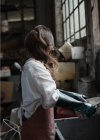
Anastasia Bull
Cassandra’s Genesis. The Realization of Utopia
For Anastasia Bull the process of creating garments is intuitive and follows the flow of her thoughts. Pleats, voluminous shapes and colourful fabrics create an ethereal and powerful look that invites into an idyllic, utopian world. • An important part of her work is pleating. While pleating is not a new craft and is usually known as part of the language of certain skirts or trousers, it has also allowed her to take it further and create other, more abstract forms. Draping and creating volume with the help of pleated pieces is particularly inspiring. The process is very intuitive, and the results are often delicate and sharp at the same time. • The preservation and development of this technique can only happen in symbiosis with fashion. An interesting aspect of pleating is its materiality. During the pleating process, the textiles change, and there is always a certain element of surprise. • Creating this collection took Anastasia Bull on a personal journey that explores psychological themes as well as feminist science fiction in relation to fashion. This collection is a utopian blueprint, an expression of her imagination, a new human image of a society, liberated from normative thinking and acting.
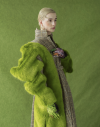
Rafael Edem Kouto
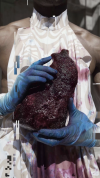
Don’t Steal Our Sunlight
The video installation Don’t Steal our Sunlight deconstructs and reconstructs the creative process, showing the possibility of creating a new narrative by emphasising the consequences of climate change. • The melting of glaciers and desertification are performed through two different traditional textile production techniques for the creation of unique upcycled garments. The body of the performer becomes both medium and tool: on one screen, the ice sculptures containing textile dye melt directly on the body and the garments, made of discarded and screen-printed jersey. On the other screen, the painting is done by airbrush with natural powder pigments on leather scraps assembled with a special crochet technique. • The two videos were filmed in a disused cement factory in Ticino, a symbol of the exploitation of the Earth’s resources and human intervention in the cycles of nature. • The special effects in the video are data taken from the Intergovernmental Panel on Climate Change, translated into disruptive visual elements addressing the trends of expansion of deserts and the shrinking of polar caps from now until 2050.
Stefanie Salzmann
Welcome to My Garden
Stefanie Salzmann’s textiles begin with the wool of her family’s Blacknose sheep from the Swiss canton of Valais, a byproduct of traditional sheep farming. She investigates the materiality of wool and uses it to craft felted tapestries and sculptures. The textile works celebrate the possibilities of wool and explore the insulating and protective aspects of the fibres, both physically and mentally. For her recent textiles, homegrown tinctorial plants such as coreopsis, marigold and rosemary, together with walnut husks harvested from the family trees, mix with traditional dye plants like indigo and madder. Stefanie derives inspiration from colours and the material itself and uses dyed fibres to paint tactile textures. The textile creations become part of her art installations and serve as tools to open a space for the discourse on the connection between culture, the environment, and the meaning and rituals of the making process.
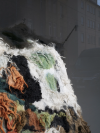
Yannik Zamboni for maison blanche
NYFW BACK Collection 2023
Maison blanche believes it is necessary to address the discourse of taboo topics by means of conceptual fashion and to create a stage for interaction. Socio-political issues, the defamation and repression of minorities, especially the lgbtqia+ community, as well as gender issues and feminism, form the content of the collections. We make queer anti-fashion – queer meaning different, abnormal or not according to expectations. Its subversive content is reflected in the deconstruction and deposition of codes. It forms a side-stream to the mainstream and serves subcultures. Our anti-fashion takes the liberty to create its own (ab)normal. It shows contempt for the maxims of action and codes of behaviour of the masses, but it also influences them. It rewrites unwritten rules, completely detached from the oppressive ideas of social ideologies and the fashion industry. We aim to expand the rules of conduct. We want out clothes to be worn not by a certain gender but by people of all genders with a similar mindset
